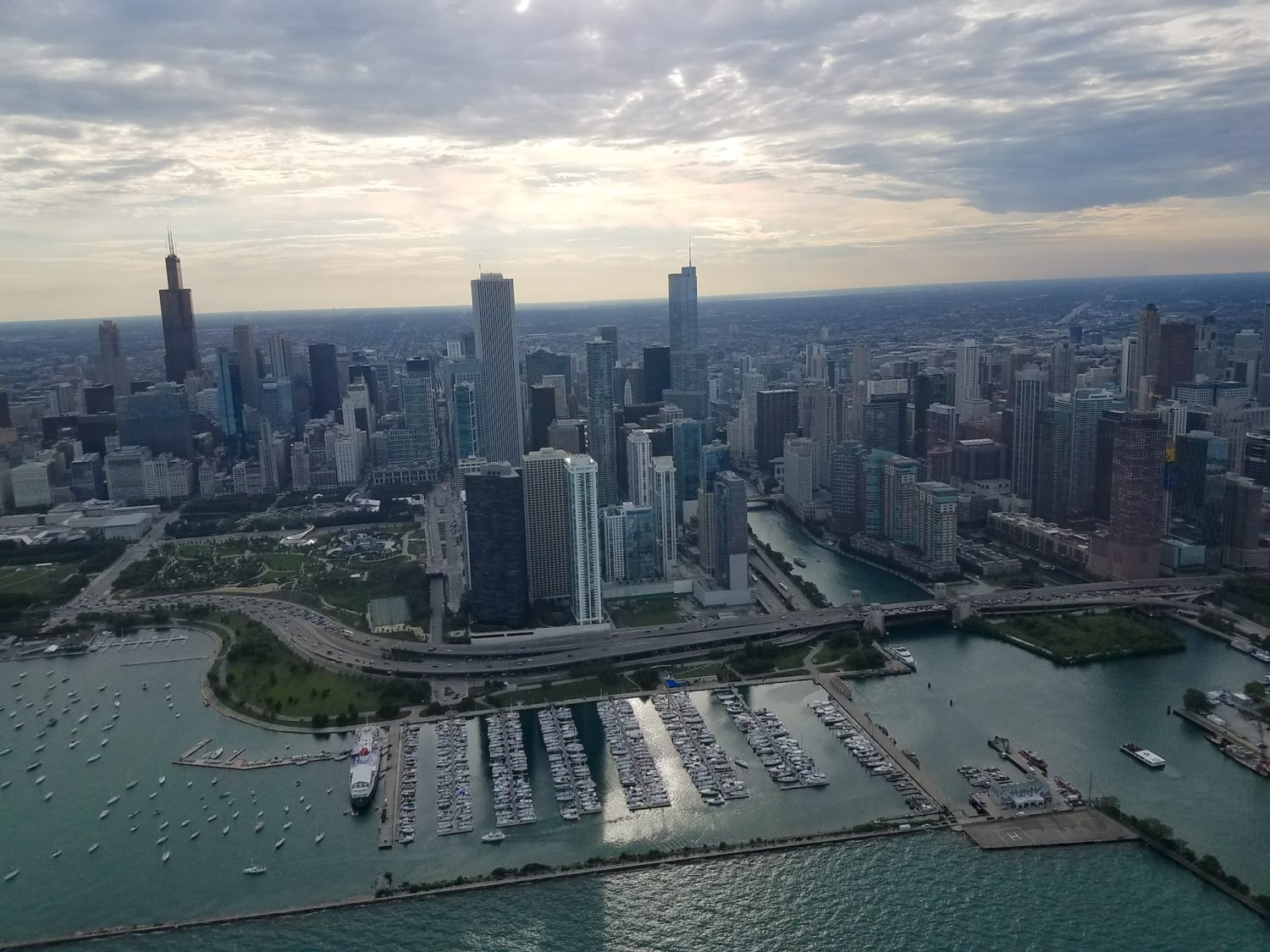After 7 (!) months of lockdowns, quarantines, and Zooming in our homes due to Covid-19, travelers are looking to get back on the road (but rather quietly, for obvious travel shaming reasons). While people miss their friends and families or just need to travel regionally (whether a short flight or a road trip), they should do it right and be incredibly safe when traveling during Covid-19, and they should also know the updated travel restrictions for all 50 states.

Due to various rules and restrictions placed by each state, it’s hard to know where (and when) you can visit a certain state. InsureMyTrip aggregated recent data and condensed it into maps and a comprehensive state breakdown to produce the updated travel restrictions for all 50 states on a continual basis.
The updated travel restrictions for all 50 states by InsureMyTrip goes beyond common questions you may have (like “Do I need to quarantine upon arrival?”) by adding information on mandatory documentation some states may require upon arrival, as well as health screenings at airports.

Here is the updated travel restrictions for all 50 states, according to InsureMyTrip.
| STATE | FURTHER EXPLANATION |
|---|---|
| Alaska | Travelers and returning residents must submit a Travel Declaration and Self-Isolation Plan throught the state’s travel portal. All passengers should take a COVID-19 test within 72 hours prior to departure and provide documentation of a negative result. If this is not possible, passengers will be tested upon airport arrival and allowed to proceed after receiving a negative result. The cost of the test is $250 for non-residents but is free for residents. In the instance of an arrival and positive result, passengers will receive medical treatment and are subject to quarantine. If you are unwilling to take a test, a 14-day quarantine will be necessary. |
| Connecticut | Passengers must quarantine upon arrival for 14 days and fill in a mandatory form if staying for longer than 24 hours and traveling from: Alabama, Alaska, Arkansas, Delaware, Florida, Georgia, Guam, Idaho, Illinois, Indiana, Iowa, Kansas, Kentucky, Louisiana, Mississippi, Missouri, Montana, Nebraska, North Carolina, North Dakota, Oklahoma, Puerto Rico, South Carolina, South Dakota, Tennessee, Texas, Utah, Virginia, West Virginia, and Wisconsin. Passengers coming from these destinations may be able to avoid quarantine if they provide written proof of a negative test taken 72 hours before travel. |
| District of Columbia | A 14-day quarantine is required if traveling from one of these areas: Arkansas, Alabama, California, Delaware, Florida, Georgia, Hawaii, Idaho, Illinois, Indiana, Iowa, Kansas, Kentucky, Louisiana, Minnesota, Mississippi, Missouri, Montana, Nebraska, Nevada, North Carolina, North Dakota, Ohio, Oklahoma, South Carolina, South Dakota, Tennessee, Texas, Utah, and Wisconsin. |
| Hawaii | All passengers traveling to Hawaii are subject to a mandatory 14-day quarantine in a home or hotel room. Beginning September 1, passengers and returning residents are required to fill out the new online Safe Travels application. |
| Idaho | Travelers to Boise and some other cities in Ada County are encouraged to quarantine for 14 days. |
| Illinois | People entering/returning to Chicago from states with cases of at least 15 daily cases per 100k are required to quarantine for 14 days. Currently, those states and territories are Alabama, Arkansas, Florida, Georgia, Hawaii, Idaho, Iowa, Kansas, Kentucky, Louisiana, Mississippi, Missouri, Nebraska, Nevada, North Carolina, North Dakota, Oklahoma, South Carolina, South Dakota, Tennessee, and Texas. |
| Kansas | Anyone who has traveled to or attended an out-of-state mass gathering event of 500 or more people where individuals did not socially distance (6 feet) and wear masks must quarantine for 14 days upon entering or returning to Kansas. Additionally, people who traveled to or from Florida between June 29th-August 11th or Arizona from July 17-27th, must also quarantine. |
| Kentucky | Travelers coming from states with at least 15 percent infection rate are asked to quarantine for 14 days. States and territories with at least a 15 percent infection rate are Alabama, Arizona, Florida, Georgia, Idaho, Mississippi, Nevada, Puerto Rico, South Carolina, and Texas. |
| Maine | All passengers are subject to mandatory 14-day quarantine, unless a negative PCR COVID-19 test is conducted 72 hours prior to arrival. Non-PCR tests, including antigen or antibody tests, are not accepted. Residents of Vermont, New Hampshire, Connecticut, New York, and New Jersey are allowed to enter without restriction. |
| Massachusetts | All passengers except those from low risk states, must fill out health form and quarantine for 14 days. Quarantine is not required if travelers produce a negative COVID-19 test result that has been administered up to 72-hours prior to arrival. Currently, low risk states are Colorado, Connecticut, Maine, New Hampshire, New Jersey, New Mexico, New York, Oregon, Vermont, Washington, and Wyoming. |
| New Hampshire | All travelers not from Maine, Vermont, Massachusetts, Connecticut, and Rhode Island are asked to quarantine for 14 days. |
| New Jersey | Passengers must quarantine for 14 days if staying in the state for more than 24 hours and coming from one of the states and territories on travel restriction. Those states and territories are Alabama, Alaska, Arkansas, Delaware, Florida, Georgia, Guam, Idaho, Illinois, Indiana, Iowa, Kansas, Kentucky, Louisiana, Mississippi, Missouri, Montana, Nebraska, North Carolina, North Dakota, Oklahoma, Puerto Rico, South Carolina, South Dakota, Tennessee, Texas, Utah, Virginia, West Virginia, and Wisconsin. |
| New Mexico | Upon arrival, travelers must quarantine for 14 days or for the length of their stay, whichever is shorter, unless traveling from a low-risk state. Low-risk states currently include: Colorado, Connecticut, District of Columbia, Maine, Massachusetts, Michigan, New Hampshire, New Jersey, New York, Oregon, Rhode Island, Vermont, and Washington. Additonally, as of September 4th, individuals who can provide documentation of a valid negative COVID-19 test administered within the 72 hours before or after entry are exempt from the 14-day quarantine requirement, regardless of the state they are coming from. |
| New York | Travelers are required to fill out a Traveler Health Form in order to determine if a 14-day precautionary quarantine is required. In general, travelers must quarantine for 14 days if staying in the state for more than 24 hours and coming from one of the states and territories on travel restriction. Those states and territories currently include: Alabama, Alaska, Arkansas, California, Delaware, Florida, Georgia, Guam, Hawaii, Idaho, Illinois, Indiana, Iowa, Kansas, Kentucky, Louisiana, Maryland, Minnesota, Mississippi, Missouri, Montana, Nebraska, Nevada, North Carolina, North Dakota, Ohio, Oklahoma, South Carolina, South Dakota, Tennessee, Texas, Utah, Virginia, West Virginia, and Wisconsin. |
| Ohio | Travelers coming from high risk areas are advised to self quarantine for 14 days. High risk is defined by states reporting positive testing rates of 15% or higher based on a 7-day average. Those states currently are Alabama, Kansas, North Dakota, and South Dakota. |
| Pennsylvania | Travelers from the following surging states are recommended to quarantine for 14 days: Alabama, Arkansas, Florida, Georgia, Idaho, Illinois, Iowa, Kansas, Louisiana, Mississippi, Missouri, Nevada, North Dakota, Oklahoma, South Carolina, South Dakota, and Tennessee. |
| Rhode Island | Travelers from states where positive tests are higher than 5% are required to self-quarantine for two weeks or provide negative results from a test taken within 72 hours before arrival. Those states are Alabama, Arizona, Arkansas, Delaware, Florida, Georgia, Idaho, Indiana, Iowa, Kansas, Kentucky, Maryland, Minnesota, Mississippi, Missouri, Nebraska, Nevada, North Dakota, Oklahoma, Pennsylvania, Puerto Rico, South Carolina, South Dakota, Tennessee, Texas, Utah, Virginia, West Virginia, and Wisconsin. |
| Vermont | Travelers from Connecticut, Maine, Massachusetts, New Hampshire, Rhode Island, New York, Pennsylvania, Ohio, New Jersey, Delaware, Maryland, District of Columbia, Virginia, and West Virginia may enter the state for leisure travel without quarantining if they do so in a personal vehicle. Travelers from other states or those arriving by another means of transportation must quarantine for 14 days or for 7 days with a negative test from their home state. |
Travelbinger is proud to be a publisher with Google News.
Some of the links in this post are affiliate links. If you click on the link and purchase the item, I will receive an affiliate commission. Please do! I’m a one-man team for this website, so any help is sincerely appreciated.
Travelbinger is now on YouTube! Subscribe here for exclusive travel tips and advice from founder Jimmy Im. Follow us on Twitter, Facebook and Instagram.
More stories:
Travelbinger is featured in New Yorker magazine as a travel expert – take a look
4 famous road trips to take in America
9 airline predictions based on aftermath of 9/11 and Great Recession (2008)
Should you book a cheap plane ticket now to travel later?
When can we travel again? Here’s the $2 trillion dollar answer.
Jimmy Im has traveled to 113 countries, stayed in over 600 hotels and has flown a million airmiles. He lives in New York City.

